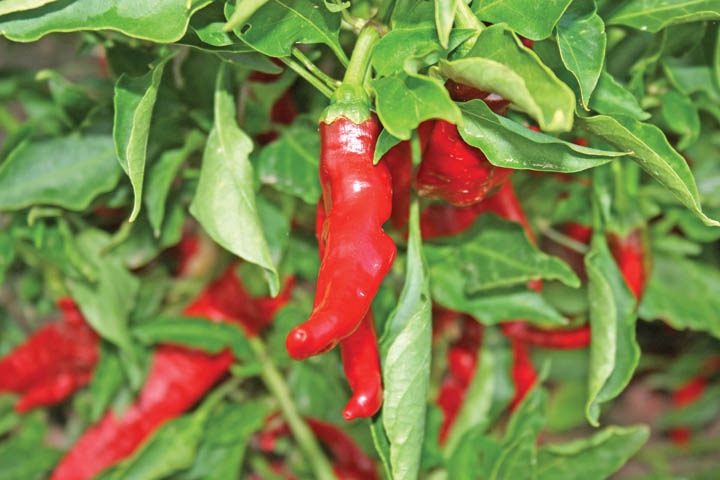
New Mexico chili pepper growers and pecan producers in the agricultural-rich middle basin of the Rio Grande River will receive almost twice as much irrigation water this year as they did in 2013, but that’s still a fraction of normal water allotments, setting the stage again for heavy groundwater pumping to nurture their crops to fall harvest.
Elephant Butte Irrigation District (EBID) officials last week set river water allotments for the growing season that will increase the amount of water allowed to pass through their irrigation canal system for use by farmers. But EBID water consultant Phil King warns that even with the increased allotments this year, basin farmers will receive only a fraction of the water they will need and much less than their average allotment.
The district provides irrigation water to an estimated 90,000 acres of crop production.
The total allotment this year will provide about six acre-inches of water for each irrigable acre of farmland. Last year's meager allotment was 3.5 inches per acre, a number irrigation officials say is the worst irrigation year in nearly a century.
EBID officials blame the smaller allotments on the ongoing drought, but say this year's increased flow is a direct result of late season rains last fall. While the amount of water is still far below what farmers require for commercial crops, the increase will at least extend the irrigation season to about 60 days, two to three weeks longer than last season.
King told EBID board members last week Elephant Butte and Caballo reservoirs may receive slightly more run-off in the weeks ahead, but probably not a significant amount. He cited a smaller snowpack as the primary reason run-offs this year remain low.
For the latest on southwest agriculture, please check out Southwest Farm Press Daily and receive the latest news right to your inbox.
Area farmers are hopeful the irrigation season will stretch until early July when monsoon season arrives in the mountains. Forecasters predict a developing El Niño event could bring more rain to the Southwest late this summer and that could provide additional run-off and perhaps make possible an extension to the irrigation season.
Chili pepper farmers and pecan producers say they will again rely on groundwater to sustain their crops, a less desirable alternative to irrigation water from the Rio Grande.
"Groundwater is more saline and not the best for crops, and is more costly for farmers," King says, and there are limitations to groundwater across parts of the basin.
Irrigating crops with groundwater is also time consuming, according to local farmers. What might take a few hours using irrigation allotments from the river could take days if growers have to rely on groundwater.
Also at issue is a claim by Texas water officials that use of groundwater in the basin depletes recharge of the river, which prevents Texas from receiving their full allotment of Rio Grande River water.
Texas has filed a lawsuit with the U.S Supreme Court to stop farmers from pumping excessive groundwater, a development mid-basin growers in New Mexico say could be devastating to their operations if the Court rules in favor of the suit.
The new allotment levels set by the EBID board last week, however, will provide some relief for Texas water users as well. Officials say they will begin releasing irrigation water on or about May 25 and Las Cruces area farmers will be seeing that water a few days later. By June 1, water users in El Paso will benefit from the release.
An extended drought, now in its fourth consecutive year across the Southwest, has forced farmers in New Mexico's mid-basin to plant fewer acres. Some farmers have switched from chili peppers to cotton in recent years because cotton requires less water.
Officials with the New Mexico Chile Association say the continuing drought is threatening the state's most revered crop, but admit the only real solution is for the return of average rainfall rates.
About the Author(s)
You May Also Like




